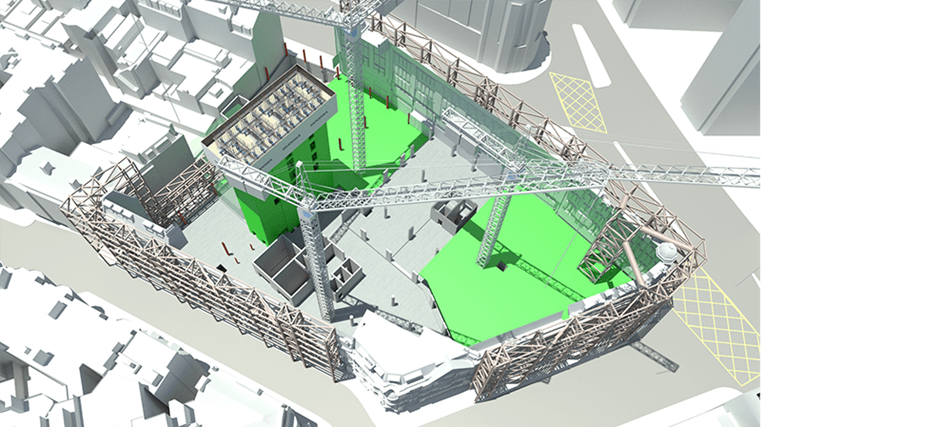Advanced digital modelling: planning smarter for better outcomes
In this article, we look at how digital modelling and technologies enable clients to test every aspect of a project before and during construction – increasing performance, productivity, and sustainability.
By Construction Director Andy Flynn and Director Phil Clempson
Proper planning prevents poor performance. It’s no secret that digital technologies can improve productivity and help the construction industry navigate disruptions and mitigate risks, but to get the full benefits they need to be deployed as an integral part of the overall construction strategy.
Therefore, how can clients use end-to-end digital modelling effectively to plan smarter, stay on track, and ultimately set themselves up for successful outcomes?
4D modelling creates confidence
Projects can be significantly de-risked through advanced 4D modelling. This allows a full digital rehearsal of the construction process prior to putting a shovel in the ground and to properly test programme logic and phase planning right through to occupation. Issues can be anticipated in greater depth – and earlier – than with traditional planning methods, minimising deviations from the programme in the delivery phase.
The role of digital modelling doesn’t stop at the planning stages though. Advances in reality capture, photogrammetry and artificial intelligence mean we can significantly change the way projects are managed and delivered, drawing on the initial model.
Through easy to use 360-degree cameras, project teams can capture accurate and progressive project information to upload, process and compare with the linked model and programme using artificial intelligence. This means confidence in the programme can be maintained throughout, via a clear and accurate overlaid narrative of progress against plans.
This technology allows us to turn 4D modelling from a pre-construction tool into a process to manage the actual operation of projects. To get these benefits, a clear digital strategy on how the programme can be effectively specified, procured and delivered – by using and linking to the information produced by the design teams – should be set early at client level before the delivery team is procured. This way the project not only benefits from a co-ordinated and linked construction programme, but by linking with reality capture we can use near time data to continuously manage progress throughout.

Take stakeholders on the journey with you
Sometimes the old ways are the best – but not for all stakeholders. Traditional methods of recording and communicating progress, such as Gantt charts, still have a place, but are not always as digestible for non-technical stakeholders.
4D sequences provide a simple, transparent and engaging way to communicate project plans to a wide range of these non-technical stakeholders, including end users.
Progress against plans can be validated and assured by connecting directly to the digital design process, providing stakeholders with the confidence that the information they receive is as accurate and up to date as possible.
Taking stakeholders on this journey can open the door to co-creation and ensure the finished product meets end users’ needs.
Review progress and hold contractors to account
Digital programme management tools can provide a validated record of events throughout the project and demonstrate how they compare to plans. This can enable smarter management of contractors, by holding them to account against agreed plans.
Clients have the potential to avoid disputes – rather than having to resolve disputes as and when they arise – by keeping accurate records throughout construction and handover, allowing early warning and effective issue management.
It is important, to enable and promote transparency in reporting, that clients agree with contractors at the outset that these tools will be used and how they will be used. Standard and open reporting cycles should be agreed with contractors, to ensure that they are using digital reporting as intended and capturing the right information at the right intervals.
A single version of the truth
Should issues arise during or after the project, retaining digital records in one central and secure place means that the admin burden of uncovering, validating and formatting data can be greatly reduced. This could be particularly valuable in a claim scenario, equipping clients with a single, easily accessible version of the truth that can be used to support their case.
Beyond the use of 360-cameras and their output for programme and quality assurance, there is an opportunity for progressive verification using point cloud laser scanning. While it is a more time-consuming process, this level of accurate as-is data can be progressively loaded into the 3D model, to support effective change control and as-built modelling.
The technology and workflows could support future mandatory requirements, such as the Building Safety Bill and the requirement for a golden thread of information.
Increased governance, awareness and use of cloud-based common data environments – along with the development of APIs and access to these systems – is breeding a new era of technology opportunities in construction.
